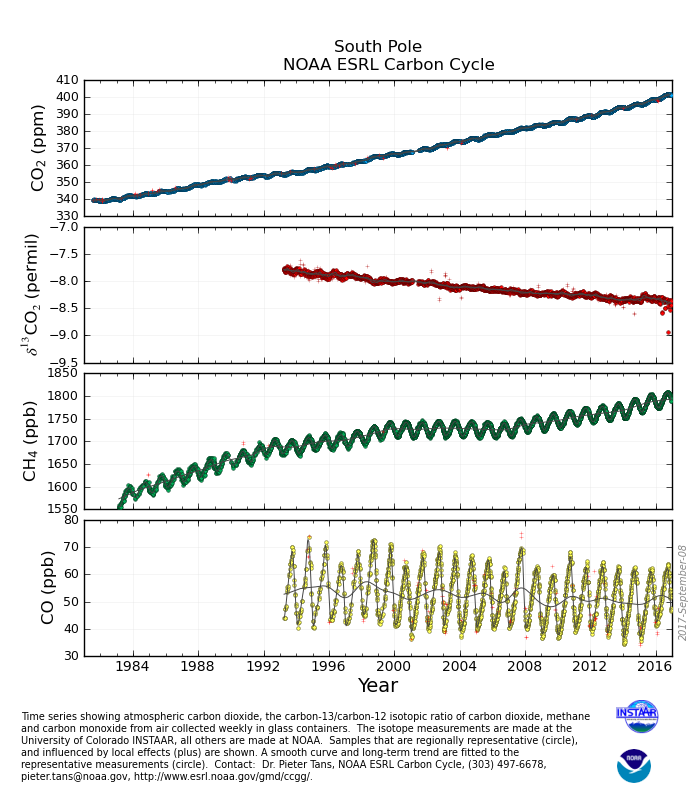boppa said:
popping, I’m not surprised, I have been watching the current eruption happening there, there are active vents only 30km from the observatory, and the prevailing winds blow almost directly at it most of the times
https://www.google.com/maps/d/viewer?mid=1CvBhH9wEeztBrqYbsGDi4YjU1k1QH5AL&ll=19.451471356185117%2C-154.8999122209625&z=12
IMHO its like using a smog sensor in the middle of a city and claiming it represents the air quality in the middle of the oceam
“We only detect volcanic CO2 from the Mauna Loa summit late at night at times when the regional winds are light and southerly. Under these conditions, a temperature inversion forms above the ground, and the volcanic emissions are trapped near the surface and travel down our side of the mountain slope. When the volcanic emissions arrive at the observatory, the CO2 analyzer readings increase by several parts per million, and the measured amounts become highly variable for periods of several minutes to a few hours. In the last decade, this has occurred on about 15% of nights between midnight and 6 a.m.
These periods of elevated and variable CO2 levels are so different from the typical measurements that is easy to remove them from the final data set using a simple mathematical “filter.”
NOAA’s Earth Science Research Laboratory program also measures CO2 in weekly flask samples taken at over 60 remote locations around the world. The Mauna Loa Observatory baseline CO2 concentrations agree very well with flask measurements taken at a similar latitude around the world, which confirms that the volcanic CO2 does not affect our final results. These measurements all show significant increases in CO2 over the last few years.”
https://earthobservatory.nasa.gov/blogs/climateqa/mauna-loa-co2-record/


